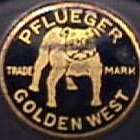
bulldog1935 replied to Glenn's topic in General Bass Fishing Forum

bulldog1935 replied to Glenn's topic in General Bass Fishing Forum

bulldog1935 replied to bulldog1935's topic in Fishing Rods, Reels, Line, and Knots

bulldog1935 replied to bulldog1935's topic in Fishing Rods, Reels, Line, and Knots

bulldog1935 replied to bulldog1935's topic in Fishing Rods, Reels, Line, and Knots

bulldog1935 replied to bulldog1935's topic in Fishing Rods, Reels, Line, and Knots

bulldog1935 replied to bulldog1935's topic in Fishing Rods, Reels, Line, and Knots

bulldog1935 replied to bulldog1935's topic in Fishing Rods, Reels, Line, and Knots

bulldog1935 replied to bulldog1935's topic in Fishing Rods, Reels, Line, and Knots

bulldog1935 replied to bulldog1935's topic in Fishing Rods, Reels, Line, and Knots

bulldog1935 replied to bulldog1935's topic in Fishing Rods, Reels, Line, and Knots

bulldog1935 replied to bulldog1935's topic in Fishing Rods, Reels, Line, and Knots

bulldog1935 replied to mheichelbech's topic in Fishing Rods, Reels, Line, and Knots

bulldog1935 replied to bulldog1935's topic in Fishing Rods, Reels, Line, and Knots

bulldog1935 replied to bulldog1935's topic in Fishing Rods, Reels, Line, and Knots

bulldog1935 replied to bulldog1935's topic in Fishing Rods, Reels, Line, and Knots

bulldog1935 replied to mheichelbech's topic in Fishing Rods, Reels, Line, and Knots

bulldog1935 replied to bulldog1935's topic in Fishing Rods, Reels, Line, and Knots

bulldog1935 replied to bulldog1935's topic in Fishing Rods, Reels, Line, and Knots

bulldog1935 replied to bulldog1935's topic in Fishing Rods, Reels, Line, and Knots
We have placed cookies on your device to help make this website better. You can adjust your cookie settings, otherwise we'll assume you're okay to continue.

